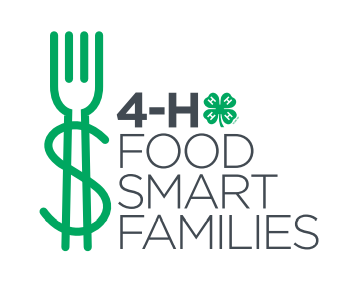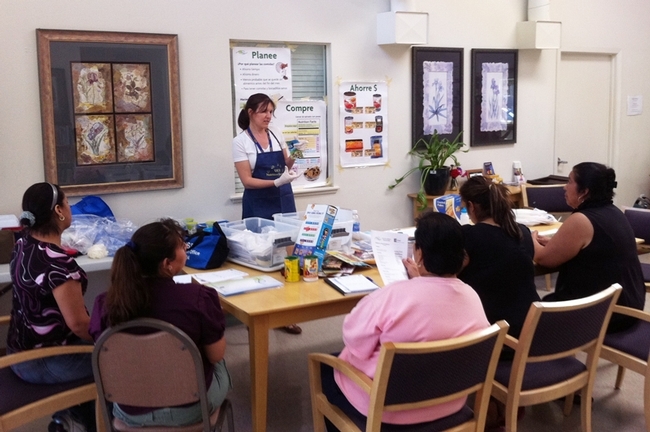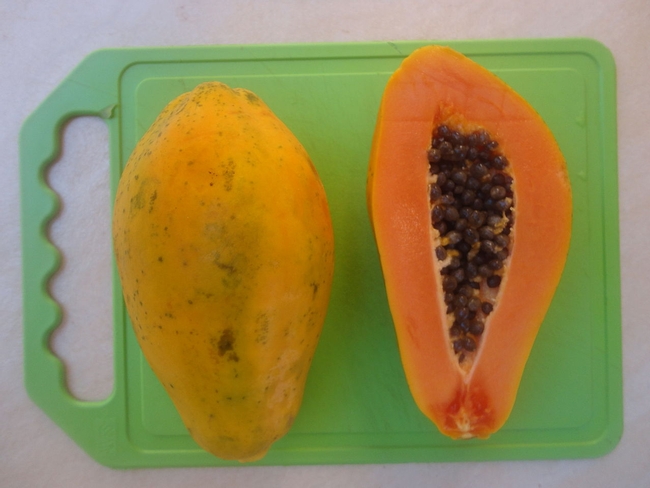UC Food and Agriculture Blogs
Empowering California youth through food smart families
We are what we eat. Unfortunately, we don't always make the best food choices. Sometimes it's simply a lack of will power. In communities struggling with high poverty rates, it's often the result of low incomes and limited food options. Dangerously high obesity rates, especially among youth, are a major public health concern in the United States.
The health of California youth reflects this disturbing national trend. To address the challenge of childhood obesity statewide, the California 4-H Food Smart Families program will be implemented at four sites in Fresno, Orange, Sutter-Yuba and Tulare counties this year. Additional UC partners will include the Expanded Food and Nutrition Education Program (EFNEP) and CalFresh.
Youth need to increase consumption of dark green veggies and whole grains, and decrease intake of sugar and saturated fats. The objective of California 4-H Food Smart Families is to increase knowledge and create behavior change related to nutrition, cooking, gardening, physical activity and food preparation. The program engages youth 8 to 12 years old and teens in 4-H Healthy Living programming. Youth will be directly reached through lessons delivered at after-school sites, low-resource elementary schools and organized field days at four UC Agriculture and Natural Resources Research and Extension Centers (REC): Kearney REC in Parlier, South Coast REC in Irvine, Sierra Foothill REC in Browns Valley and Lindcove REC in Exeter. The program is structured around positive youth development curricula and practices which provide an intensive engagement of underserved children, teens, families and other stakeholders. Local 4-H teens will be recruited and trained to deliver programs and assume leadership roles.
The National 4-H Council partnered with the ConAgra Food Foundation to launch the national 4-H Food Smart Families program in 2014. ConAgra sponsored funding to award grants to five states for program implementation. This year, in addition to the original five states, California and Louisiana were awarded grants as new participants. Inclusion of the UC Research and Extension Centers in the California program is a new model that organizers hope will be replicated elsewhere. Youth and families who visit the centers will witness first-hand not only how food is grown, but also the science behind it. Center specific lessons may be added to highlight the unique nature of local agriculture and natural resources and the food crops cultivated and studied at each center.
Programming at California sites will get underway this fall and will continue through the school year. Look for more exciting California 4-H Food Smart Families news in the coming months as programming and activities kick into high gear.
Author: Roberta Barton
Families use money-saving shopping tips from UC to buy healthy food
The contents of the refrigerators and cupboards of five Latino families after they participated in UC Agriculture and Natural Resources (UC ANR) nutrition training was heartening.
Most kitchens were stocked with ample fruit and vegetables, legumes and whole wheat bread. Researchers inventoried the food in the five homes before and after the training, and were able to document significant improvements attributable to UC ANR's signature nutrition education curriculum, Plan, Shop, Save & Cook.
“The classes helped families make small changes that made a difference – leading to modest, but very important savings at the end of the month. If your cupboards are bare, an extra $5 in your wallet is significant,” said Susan Algert, the nutrition, family and consumer sciences advisor for UC ANR in Santa Clara County. “The families typically turned around and spent those savings on something healthy, which is what we asked them to do.”
A report on the pilot study was published this month in the Journal of Hunger & Environmental Nutrition. The families involved were all eligible for the federal government's Supplemental Nutrition Assistance Program, which in California is called CalFresh. The educational component, administered by UC ANR Cooperative Extension, is called UC CalFresh.
“Digging through pantries is labor intensive, but revealing,” said Algert, the study's lead author. “This gives us a good idea what changes people make at home after they participate in our training.”
Typically the effectiveness of nutrition education programs are judged by asking participants to answer surveys before and after they attend classes, but errors due to attention, comprehension, memory and recording can lead to inaccurate conclusions.
“Direct observation is the gold standard and is conducted by trained researchers who travel to a subject's home and record all foods present in the home – in the refrigerator, freezer, pantry and elsewhere,” Algert said.
In the pilot evaluation, all the participants were Mexican or Mexican-American women 27 to 50 years old. A Spanish-speaking UC CalFresh educator presented three two-hour classes designed to help families stretch food dollars and increase consumption of fruits, vegetables and whole grains. The class sessions included information on the USDA's MyPlate nutrition guide, portion sizes, comparison shopping, label reading, menu planning, healthful fats, limiting sugars, cooking, and saving leftovers.
When the before-and-after food inventories were tabulated, the researchers were able to draw conclusions about the training.
One encouraging trend, Algert said, was that funds realized by money-saving tips in the curriculum were not used to buy junk food, but rather to purchase more pricey fruit like papaya and mango and slightly more expensive whole wheat bread instead of white.
“Having worked with Latinos for many years, this made sense to me,” Algert said. “They wanted fruit that was part of the family culture from Mexico.”
Four of the five families switched to whole wheat bread.
“Whole wheat bread has come down in price to $2.50 or $3 a loaf, so that is a behavior that families could change very readily,” Algert said. “One family didn't change to whole wheat because the mother said the family preferred the taste of white bread.”
Four of the five families were able to shop less often using skills they learning in the UC CalFresh training, including planning menus, making healthier recipes from scratch and making shopping lists.
One participant said, “I used to spend $100 to $150 a week on food. Now I spend the same amount but every two weeks. I'm saving a lot.”
Another participant said sticking to a shopping list helps the family stay within a budget. “Now I avoid taking my kids to 7/11 or convenience stores because the food is not healthy and it just contributes to spending more money,” the participant said. “This way, I am saving the money I can spend on healthier food.”
An initiative to maintain and enhance healthy families and communities is part of the UC Division of Agriculture and Natural Resources Strategic Vision 2025.
Author: Jeannette Warnert
National Pollinator Week: How IPM helps pollinators
June 15-21 is National Pollinator Week, a time to highlight the crucial role that pollinators play in producing food for our nation. Something you may not know about pollinators is that many of them, including beetles, flies, and wasps, are also...
It's Bed Bug Awareness Week!
You heard right: bed bugs have there own "awareness week" too. California and other states have seen a recent resurgence in bed bugs in more than just crowded housing units and hotels. Bed bugs can be found anywhere where humans, their primarily...
California Invasive Species Action Week, June 6-14
Did you know that this week (June 6 - June 14) is California Invasive Species Action week? The goal of this week is to increase public awareness of invasive species issues and share ways we can all participate in the fight against California's invasive...






